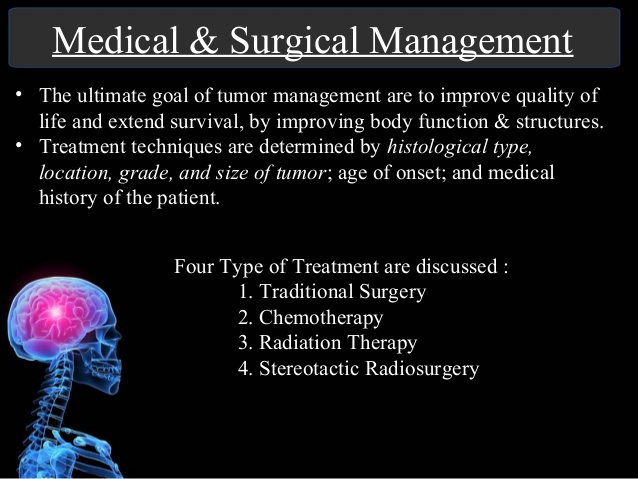Brain Tumor Surgery – Types & Recovery

Brain Tumor Surgery – Types & Recovery
Brain tumor surgery is performed to remove the tumor from the brain. In other words, it’s an operation done to reduce the pressure inside the brain. If you are diagnosed with a brain tumor, the primary treatment is brain tumor surgery. It is performed to remove the tumor, either wholly or as much as possible. Usually, surgery is an initial step to treat the beginning stages and other malignant tumors. It is a widely approached treatment by all, where the tumor can be removed easily without any risk of neurological damage.
Types of Brain Tumor Surgery
Mentioned below are the common types of brain tumor surgery done to date.
1. Biopsy: A surgery performed to remove a tumor tissue sample.
2. Craniotomy: An operation carried out to remove a portion of the skull. Doing so allows the neurosurgeon to find and delete the tumor as much as possible. The removed part is replaced after the surgery.
3. Craniectomy: It is similar to craniotomy. The only difference in this operation is that the portion of the skull removed is not replaced.
4. Debulking: Surgery is done to reduce the size of the tumor.
5. Partial Removal: An operation carried out to remove only a part of the tumor (due to the risk of a neurological disorder)
6. Complete Removal: Surgery is done to remove the entire tumor.
7. Shunt: The insertions of drainage systems designed to allow excess fluid from the brain to another part of the body.
8. Ommaya reservoir: A tiny container inserted under the scalp and is connected to a tube. The container is used to:
a) Give chemotherapy treatment to the brain and the cerebrospinal fluid (CSF) surrounding it.
b) Remove CSF to detect the presence of healthy cells.
c) Remove cystic fluid without the urge for surgery.
9. Skull-Based Surgery: It belongs to the area of a tumor and is the specialized technique used to remove tumors in this field.
10. Transsphenoidal Surgery: A surgery performed on pituitary adenomas and craniopharyngiomas.
11. Laser Interstitial Thermal Therapy is a minimally invasive method of ablating tissues with heat. It is an efficient and safest technique used to date. It is also considered a minimally invasive option for new or recurrent primary and metastatic tumors anywhere in the brain.
Recovery Time for Brain Tumor Surgery
Recovery time depends on:
- The entire operation was done.
- The part of the brain where the tumor is located.
- The areas of the brain are affected by surgery.
- Patient’s age and overall health.
Medical Disclosure:
The information contained in this article is presented to educate the people. Nothing contained in this article should be construed nor is intended to be used for medical diagnosis or treatment. It should not be used in place of the advice of your physician or other qualified health care provider. Please promptly call or see your physician or other qualified healthcare providers if you have any healthcare-related questions. Always consult with your doctor or another qualified healthcare professional before starting a new treatment, diet, or fitness program.
You should never disregard medical advice or delay seeking it because of something you have read in this article.






